It's probably impossible to know exactly what your dog is thinking. But a few years ago, Gregory Berns, a neuroscientist at Emory University, decided he wanted to try and find out anyway.
The catalyst was Bern's diminutive pug Newton, a fawn-colored pooch with a friendly disposition and a small black mole on his cheek vaguely reminiscent of a young Robert De Niro. Every night for more than a decade, Newton climbed into bed with Berns and his wife and nestled his meatball-shaped head into the crook of the neuroscientist's armpit, before passing out and snoring loudly. The routine continued even after Newton grew so arthritic that he relied on a tiny-wheeled cart attached to his hind legs to tow himself around and required assistance to get into the bed.
When Newton finally passed away at the ripe old age of 97 (in dog years), Berns was so devastated that he began to ruminate on the nature of their relationship. Yes, he really had loved that little guy intensely. But had Newton, he wondered, felt the same way about him? Berns tried not to dwell on the question. It was sad to contemplate the possibility that for Newton their relationship might have come down to nothing more than a hankering for dog treats or a new chew toy. And how could one ever really know what went on in the head of an animal?

A few months later, while watching news footage of a trained dog participating in the military operation to capture Osama bin Laden, Berns had an epiphany. If a dog could remain calm during a military raid, perhaps he could train his new pet terrier to lie still in an MRI machine long enough to scan her brain and see how she thinks.
Since then, Berns has scanned the brains of more than 100 dogs, published the results in two books and established himself as a pioneer of the rapidly growing field of research called "canine cognition," which is revealing new insights about the often-enigmatic behaviors of our fabulous furry four-legged friends.
Today there are Canine Cognition labs at Yale, Duke, University of Arizona, University of Portsmouth, Barnard College, University of Florida and a wide array of leading scientific institutions around the globe—and the study of dogs in general is one of the fastest growing areas in the broader field of animal behavioral science. A new international consortium called the ManyDogs Project, with researchers in Austria, Poland, Italy, Canada, the U.S., Argentina and a number of other countries, recently completed its first major collaborative study and plans to publish it later this year.
The insights emerging are confirming things many dogs owners have long suspected and are fundamentally changing what scientists thought they knew about dogs. Far from being dumb creatures with good noses, as previously thought, they're actually smart in specific ways that make them ideal human collaborators and companions. Over the millennia, they have evolved to be cooperative animals, endowed with the neural machinery to understand abstract ideas and complex social dynamics. They're able to read and assess human emotions with great accuracy, can understand some language and are even capable of making rudimentary signals.
The new dog science is also addressing the issue most prominently on the minds of Bern and dog owners everywhere: Does my dog really love me?

Dogs Are No Dummies
Humans have been domesticating dogs for at least 32,000 years—more than 10,000 years longer than horses. Today the U.S. alone is home to an estimated 90 million pooches (roughly one for every four Americans), many of whom have owners who treat them like mini people, dressing them in raincoats, sweaters and booties (the global pet clothing market topped $5.2 billion in 2021). They confide their deepest secrets, rearrange vacation schedules to accommodate their idiosyncrasies and shower them with gifts and luxuries such as dog houses and rawhide.
Scientists who study animals have tended to turn their noses up at dog cognition. This attitude was driven in part by the mistaken belief that domestication had dumbed dogs down. In a famous 1985 experiment, University of Michigan researchers found that wolves could unlock a gate mechanism after watching a human do so, but domesticated dogs didn't seem to get it. The implication was that the dogs were stupid.
All that changed in the late 1990s and early 2000s, thanks to a series of groundbreaking experiments by ethnographers Vilmos Csányi and Ádám Miklósi and their collaborators at Budapest's Eötvös Loránd University.
Csányi and his wife were hiking one winter in the Hungarian mountains and stopped to pet a particularly gregarious stray. The dog followed them for five miles through the snow before Csányi picked him up and carried him the rest of the way home. Flip, as they called him, was white and brown and had stumpy legs and resembled an Ewok, a cute furry biped from Star Wars. Flip quickly became an indispensable member of the household and won over all their friends and family. What was it about this "fuzzy male of low stature, surely a mixed breed," Csányi wondered, that made him so magnetic?

Flip seemed to be living proof that the conventional wisdom about dogs—that they were unintelligent—was wrong. The ability of canines to insinuate themselves successfully into the lives of their human owners seemed like an amazing feat of evolutionary magic. "Dogs are smart enough to survive in a human family, which is actually a quite complicated task," recalls Miklósi. "Wolves can't do that. Establishing a specific social relationship with another species is quite challenging."
Csányi and Miklósi decided to examine the process by which humans and dogs forge strong emotional bonds. As ethologists, they were familiar with the extensive scientific literature on "attachment," the process by which parents and children of different species formed lasting emotional bonds.
Human owners and their dogs, they theorized, formed bonds in the same way—growing close through a process that mimicked that of a human parent and child.
Their theory was inspired in part by Flip's behavior at home, which struck Csányi as uncannily familiar. "When my children were 2 or 3 years old, they wanted all of my attention. They wanted to touch me, they wanted me to touch them," he recalls. Flip's behavior was "very similar."
In an early experiment, Miklósi and Csányi placed dogs and their owners in an unfamiliar room with interesting things to explore and took notes. The dogs and their owners exhibited behaviors virtually identical to what developmental psychologists had long observed in well-adjusted human infants and their mothers. The dogs used the owners as a secure base, venturing out and coming back as they explored the new surroundings, all the while staying connected through eye contact and watching carefully for cues. The implication was clear: Dogs had hacked the human system designed to respond to cuteness and bonding.
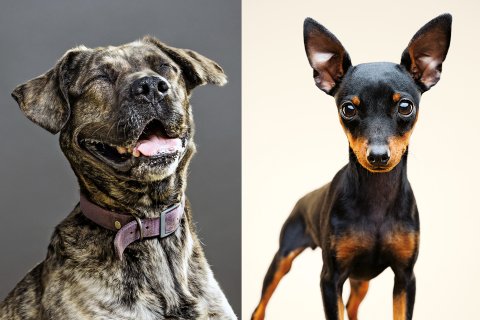
In recent years, scientists have extended this line of research. When a dog and a human are bonded, each touch and each bit of eye contact causes their bodies to release the powerful hormone oxytocin—the "love chemical" that also promotes bonding between mother and child and is known to lower heart rate and blood pressure. Petting increases levels of the hormone dopamine, sometimes referred to as a feel-good chemical, and endorphins in both dogs and humans.
Other studies have found that dogs have evolved two to three times as many fast-twitch facial muscles as wolves, which gives them greater latitude for expression. A special facial muscle allows them to widen their eyes in ways that way human babies do, eliciting the same high-pitched voices and facial expressions that parents use with infants. Dogs at shelters that are better at making these "puppy-dog" eyes are more successful at finding new homes. Dogs given oxytocin, meanwhile, tend to gaze at their owners more, which causes the owners to look back, setting off a virtuous cycle of more oxytocin and dopamine release and bonding.
The ability of dogs to bond with members of other species is not limited to humans, as any dog owner who also has a cat will tell you. In his 2005 book, If Dogs Could Talk, Csányi describes a dachshund-like canine named Jumpy whose owners frequently cooked rabbit stew, a delicacy Jumpy enjoyed for years. Then, one Easter, they obtained a live rabbit who temporarily became Jumpy's favorite playmate. When they turned that rabbit into stew, not only did Jumpy recognize and refuse to eat his new friend, but he went on a "silent and dejected hunger strike for three days," Csányi wrote. Jumpy has refused to eat rabbit meat ever since.
Social Intelligence
It's not just that dogs are so cute we can't resist them. Research has also confirmed that dogs are hardwired for cooperation and friendship, remarkably attuned to our emotions and limitations and, it seems increasingly clear, capable of learning and remembering complex rituals and information.
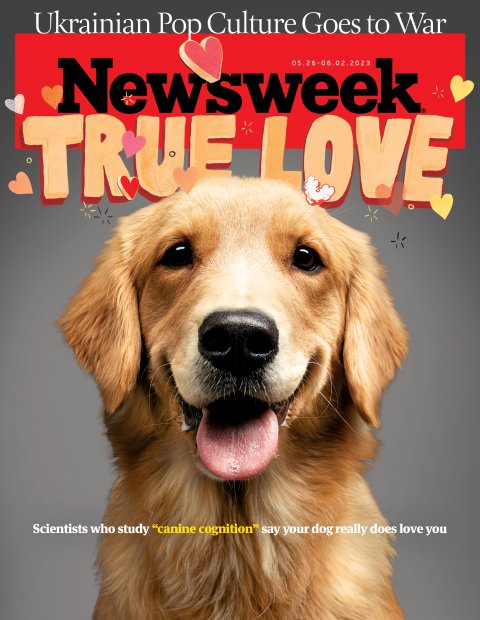
For his part, Csányi immediately noticed how quickly Flip seemed to grasp and adapt to the rules of the house. The Csányi home was crammed full of small objects. Although Flip was energetic and "prone to excitement," he never knocked anything over or broke anything. When Csányi commanded Flip to fetch an object from a table—say, a ball or a toy—he invariably grabbed it with "exquisite care." And if, in the process, anything else had been accidently moved, he would "immediately stop and ask for help by looking at me or barking."
This type of behavior led Csányi and Miklósi to question the iconic Michigan experiment comparing the intelligence of domestic dogs and wolves. Perhaps the dogs had been able to open the gate mechanism after watching humans do it. Maybe they just didn't want to break the rules.
Csányi and Miklósi recruited 28 dogs and their owners and set up a complicated contraption that required dogs to pull on the handles of plastic dishes on the other side of a wire fence to obtain meat. Outdoor dogs, who spend most of their time in the yard and thus are presumably more accustomed to acting as independent agents, outscored their indoor cousins about a third of the time, while the most obedient domesticated dogs looked to their owners for permission to reach through the fence. When they got it, however, they matched the performance of their more independent cousins.
To figure out how much the dogs could understand, the experimenters hid food in one of several containers, then brought the dogs into the room and had them guess which container had the food. To help them, researchers offered various cues, alternatively staring at, nodding toward or pointing to the correct container. When researchers use these tests on human infants, they quickly catch on to the hints. Apes and chimpanzees, by contrast, almost never do without extensive training. Dogs, like toddlers, are quick learners. They soon learn to heed the pointing, bowing, nodding, head turning and glancing gestures from humans to find the hidden food.
The pointing experiments provided the first direct evidence that dogs have the brainpower not only to understand abstract ideas, but also to ascribe motivations to members of an entirely different species, according to Evan MacLean, an evolutionary biologist and cognitive scientist who is the founder and director of the Arizona Canine Cognition Center. It also suggested that studying dogs could give us insight into sociability and what allowed humans to be so successful.

"If you think about it, pointing is a fundamentally cooperative kind of behavior," MacLean explains. "If I point out something for you, as a human, when you're trying to figure out what that means, you without thinking about it assume that I have a cooperative motive. I know something about the world that you don't, and the reason I'm doing this is because I want to help you in some way. That is cooperative behavior at its core. Other animals can't do that."
Dogs pay close attention not just to human gestures, but to human facial expressions as well. In recent years, researchers have shown that dogs can distinguish expressions of happiness, anger and disgust. They can tell when a person is sad or cheerful. Their hearts beat faster when they see photos of expressive faces than neutral ones. They avoid angry faces and pay more attention to fearful ones.
All this helps explain why guide dogs are so effective at helping blind people navigate the world and avoid stepping into traffic and how therapy dogs can comfort traumatized children, prisoners serving life sentences for violent crimes, senior citizens fading into dementia and stressed-out college students cramming for exams: because they can read human emotions and respond appropriately.
Good Judges of Character
Evidence is growing that dog smarts are not limited to social and emotional intelligence. It apparently extends to far more complex behavior as well.
Dogs are capable of making rapid, simultaneous judgements of the kindness or potential helpfulness of humans they meet—just as Flip apparently did when he decided to adopt Csányi and his wife on that Hungarian mountaintop. They also seem to be capable of accumulating sophisticated mental files on individual people and using that information to guide behavior.
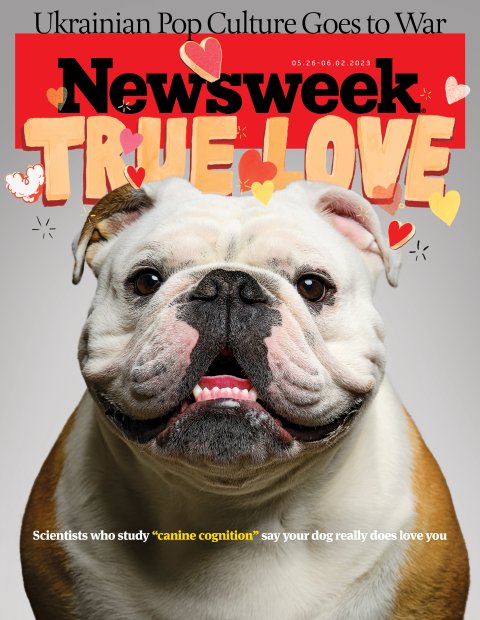
In humans, the ability to evaluate character is foundational, emerging as early as five months. Zachary Silver, who recently earned his Ph.D. at Yale and will soon open a lab at Occidental College, recently used pairs of actors to test the ability of dogs to make character judgments. One actor would pretend to steal a clipboard or actively harm somebody else, while the other would be friendlier, handing someone a clipboard they are looking for. Both actors would then simultaneously offer the dog a treat. Of 37 dogs tested, two thirds preferred to take food from the friendly actor. Other experiments have found that dogs will eventually stop following cues from human individuals who too often mislead them.
"If we're talking about social intelligence, dogs are very human-like in the way that they reason about the social world," says Silver.
Of course, dog owners have already figured this out. For instance, most people who have shy dogs know that their pets often watch their interactions with strangers closely and are more likely to make a friendly approach to someone after seeing their owner have a positive interaction. Yet they seem to understand the relationship is different—they never seem to want or expect to follow home human friends, no matter how familiar and beloved, if those friends don't reside with their primary caregivers.
With dogs, communication goes both ways. In a revised version of the pointing experiment, owners would leave the room while researchers hid food in plain sight of the dogs. Typically, when an owner returned and was asked to look for the food, the dog tried to signal by running back and forth between the hiding place and the owner or using their eyes to indicate the location.
The eagerness of dogs to help their owners was brought home to Csányi one day when he took a bad fall on an icy staircase. Flip ran to his side, licked him and stayed with him until he could get up. For years afterward, whenever they came to the same icy steps, Flip would return to his owner's side and closely watch him until they had passed the danger zone. During the summer, however, Flip seemed to recognize the danger was absent.
Barking is another effective avenue of expression. In an experiment with Hungarian mudis, a herding dog that resembles German shepherds and border collies, Miklósi recorded the dogs while playing with other dogs, anticipating food, encountering an intruder and several other situations. When he played the recordings to volunteers and asked them to guess the situation, owners and non-owners alike were right about a third of the time—about twice the rate of chance.

"When dogs are vocalizing, they're really expressing different kinds of inner states," Milóski says. "They try to communicate something about their emotions."
Dogs seem to have a big capacity to learn new ways of expressing themselves. Miklósi has shown that with just a little bit of training, dogs can be enticed to mimic a wide range of human actions spontaneously, such as bowing, jumping, lifting a limb, turning in circles—even learning to operate a machine that dispenses balls.
The Limits of 'Genius' Dogs
A sheepadoodle named Bunny has recently attracted eight million followers on TikTok for her apparent mastery of language. (A sheepadoodle is a mix of old English sheepdog and poodle.) Bunny seems to express her needs and wants by pressing buttons on a mat, originally designed to help children with difficulty communicating, linked to specific words, such as "walk." Researchers at U.C. San Diego are currently evaluating the claims and studying the extent to which nonhumans can use these tools to communicate.
It sounds like a silly TikTok thing, but the question of how much dogs can understand—and why some dogs understand more than others—is one of the hottest areas of current research.
It started a decade or so ago with the discovery of a border collie named Chaser that was extraordinarily smart. John Pilley, a behavioral psychologist at Wofford College in South Carolina, trained Chaser to identify and retrieve 1,022 toys by name (he wrote it all up in his 2013 New York Times bestseller Chaser: Unlocking the Genius of the Dog Who Knows a Thousand Words). Chaser was also able to discriminate verbs used to describe a desired action—such as "pull" or "fetch." When asked to fetch a specific toy Chaser had never heard of, the dog was also capable of inferring which toy the experimenter wanted if it knew the names of all the other toys present, presumably by a process of elimination.
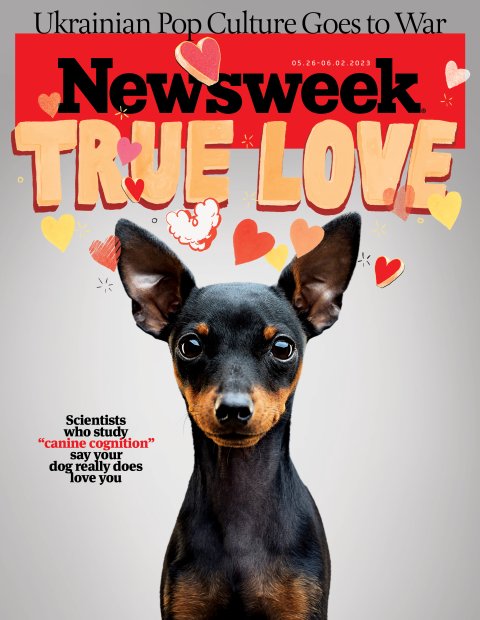
Chaser kick-started a quest among some researchers to find more examples of "genius dogs" to study. In 2021, Miklósi, set up a website to find smart dogs (he's still seeking candidates) and launched a high-profile "genius dog" contest that was covered by CNN and other media outlets during the pandemic, pitting dogs with big vocabularies against one another. So far, he has identified 40 dogs from around the world. Whereas the average dog may know the names of one or two objects, a genius dog will know four to six names and can quickly learn 80 to 100 with training. It usually takes 10 or 15 minutes to learn the name of one object and the dogs retain them memory for about a month. The "cognitive trick" by which they are learning remains an active area of exploration, and to draw conclusions he first needs to recruit more dogs.
Some experts remain skeptical about many claims people make about their dog's abilities. Amritha Mallikarjun, a postdoc at Penn Vet Working Dog Center at the University of Pennsylvania, which specializes in training and studying search-and-rescue dogs, bomb sniffers and other service dogs, says that, in general, people tend to overestimate the capacity of dogs to understand speech. Miklósi admits that only an extremely small percentage of dogs are capable of learning 100 words or more.
Dogs may never recite Shakespeare, but they do seem to have an affinity for different languages. Mallikarjun has demonstrated that dogs raised in English-speaking households show far more interest when people speak in Spanish (and vice versa), because, she thinks, it is novel to them. "They can certainly learn the idea that a spoken utterance corresponds with an action or an item, but they cannot speak language" in a technical sense, says Mallikarjun. In most cases, dogs understand the tone, and often can figure out the meaning of words by the context. But most dogs can't actually distinguish between nouns and verbs without cues.
"I can certainly train a dog to step on a button if they want to go outside," she says. "I can also train a dog to ring a bell if they want to go outside, which is what a lot of people have already done. Or you just wait until your dog comes over to you. Because generally we understand our dogs pretty well. Chaser was the only dog thus far that's basically been able to show the idea that there's an action that can go with an object, and they're separate."
Inside the Doggie Brain
As brain imaging technologies continue to advance, they're offering tantalizing clues about what goes on in canine brains. Dogs, research shows, see the world in radically different ways than people do.
Philippa Johnson, an associate professor of diagnostic imagining at Cornell College of Veterinary Medicine, recently produced the first atlas of the canine brain. She's found that the temporal areas of the brain—those involved in long-term episodic memory and emotions—are roughly comparable in dogs to those of humans. This explains how dogs bond so well with humans and understand emotions. However, a dog's frontal cortex—the seat of abstract reasoning, problem solving and imaginative thought—is far smaller than that found in humans. To Johnson, this suggests dogs are "much more present" than humans, blissfully immune to worrying about what will happen beyond the next meal or cuddle.
However, other areas of the brain are far larger in dogs than in humans. These include those involved in visual processing, fine-motor function and smell. Johnson has also done extensive work mapping the "white matter" connections in the canine brain, which sheds light on what areas most often work in tandem.
Perhaps most notably, she has identified a major track in dogs that is not present in humans. It provides a direct connection between the visual cortex and the olfactory lobes, involved in processing smells. She's also found direct connections, not found in any other species, between the nose and the spinal cord. An odor entering a dog's nose will sometimes be processed in the visual areas of the brain, which is why some blind dogs seem to retain some ability to "see." More broadly, this means that the moment-to-moment experience of a dog probably involves an intricate interweaving of sights and odors.
Indeed, if dogs have a superpower, aside from social cognition, it would be their sense of smell. A dog's nose is a million times more sensitive than that of a human. The average person is equipped with five million olfactory receptors—tiny proteins capable of detecting individual odor molecules—clustered in a small area in the back of the nasal cavity. By contrast, the average dog has 300 million olfactory receptors—60 times more than humans—extending from the nostrils all the way to the back of the throat. By some estimates 35 percent of a dog's brain is dedicated to smelling, compared to 5 percent for humans.
That's why dogs have been used for centuries to sniff out outlaws, explosives and drugs, find avalanche victims and rescue individuals trapped under buildings. In recent years, they've even been trained to sniff out cancer and COVID-19. Clara Wilson, an expert on canine olfaction at the Penn Working Dog group, found that dogs can smell human stress. In experiments, a dog presented with a piece of cloth swabbed from the back of a person's neck and breathed on can usually tell whether or not that person had recently been asked to perform a difficult math task.
Dogs, Wilson notes, also use their sense of smell to keep track of time. They can tell the difference between an odor that's 12 hours old or four hours old. That's how they know when it's time to go out for a walk and when their owner is due home from work. Often, on walks, they are sniffing out urine from other dogs, which contains copious amounts of information, such as whether a dog was in heat, stressed out, happy or sick.
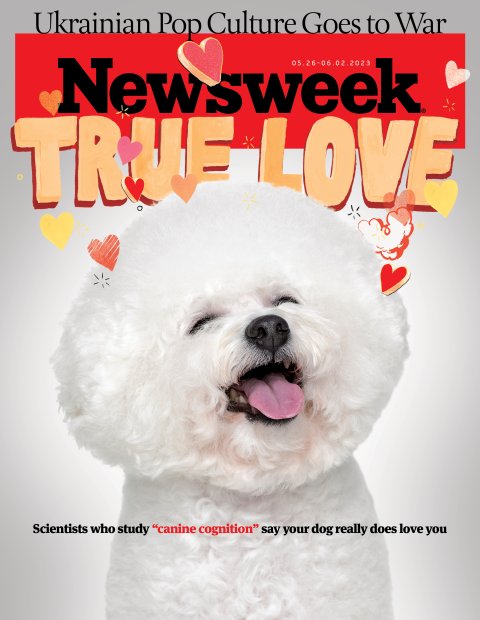
One study found that small adult male dogs tended to pee higher relative to their body size than larger adult male dogs to exaggerate their height and competitive ability. In another study, researchers showed dogs pictures of other dogs whose pee they'd sniffed. The dogs who sniffed the pee were surprised if the size of the dog in the picture did not conform to the mental image in their head, Wilson says. There's so much information in pee that Wilson and her colleagues refer to it as the "pee-mail" system. A dog will often pee its reply on the same spot.
There is, of course, a wide variability between one dog's brain and another's. Erin Hecht, head of the Evolutionary Neuroscience Laboratory and the Canine Brains project at Harvard, has been studying how human breeding has affected canine brain development. In research published in 2019, she looked at 62 pure-bred dogs from 33 different breeds and found substantial differences in the sizes of different brain regions and networks, depending on whether they had been bred for hunting, herding, guarding or companionship.
One network included reward regions of the brain that would be involved in social bonding to humans, training and skill learning. These regions would be more pronounced in companion "lapdog" breeds, such as the Maltese and Yorkshire terrier. A second network, associated with active smelling and tasting in pursuit of a goal, was larger in scent hunters, such as beagles and basset hounds. A third set of areas—used for eye movement, vision, spatial navigation and motor areas involved in moving through a physical environment—was larger in dogs bred for sight hunting, such as whippets and Weimaraners.
A fourth network included high-order brain regions that might be involved in social action and interaction, including areas that appear to be activated when dogs are presented with human faces and vocalizations, which was also linked to companion breeds like the Maltese and Yorkshire terrier. A fifth set of regions involved in fear, stress and anxiety, which regulate behavioral and hormonal responses to environmental stressors and threats, was well developed in breeds historically used for fighting, including boxers and bulldogs. And a sixth network, involved in processing smell and vision, was linked to dogs with historical police and military functions like boxers and Doberman pinchers.
"There's way more variation across dog brains than there is across any other species," she says. "And so this is the result of human breeding. We have made them this way, and different breeds of dogs have brains that are sort of prewired to excel in different areas."
"It's a challenge to figure out how dogs think and what the world is like to them, because they have evolved to make us think that they are like us," she adds. "They've evolved to mimic human psychology in some ways. That doesn't necessarily mean that that's actually what's happening in their brains. We have to try to take off our human color glasses to understand what's going on with them, and that's hard for us to do."
Does My Dog Love Me?
All the research findings in the world about how much dogs understand language, read human intent and are keen judges of character did not satisfy Gregory Berns. He still sought an answer to his Big Question about Newton. When his beloved pug looked up at him with those puppy-dog eyes, was it true love?
Since Newton had already crossed the Rainbow Bridge, Berns turned his attention to Newton's successor, a pet terrier named Callie. He trained Callie to lie still in an fMRI scanner. Berns fed her, praised her and left her alone in the huge donut-shaped machine and monitored the reward areas of her brain to see when they lit up the most.
The results were unambiguous: kind words from Berns lit up Callie's reward centers just as much as the dog treats, demonstrating that Callie—and by extension, Newton—loved him just as much, if not more, than a scrumptious piece of food.
"When people want to know 'what is my dog thinking,' I think what they're asking is, 'does my dog love me? I love him,'" Berns says. "The answer is 'absolutely.' It's remarkably similar to how we experience the relationship. They have these social bonds that with us, that they find them intensely rewarding."
Science, in this case, is telling us what we already knew.

"Love" - Google News
May 17, 2023 at 04:00PM
https://ift.tt/LXT7pNC
Does Your Dog Truly Love You? Science Has the Answer - Newsweek
"Love" - Google News
https://ift.tt/FVjEHDy
https://ift.tt/fhqFQDy
Bagikan Berita Ini














0 Response to "Does Your Dog Truly Love You? Science Has the Answer - Newsweek"
Post a Comment